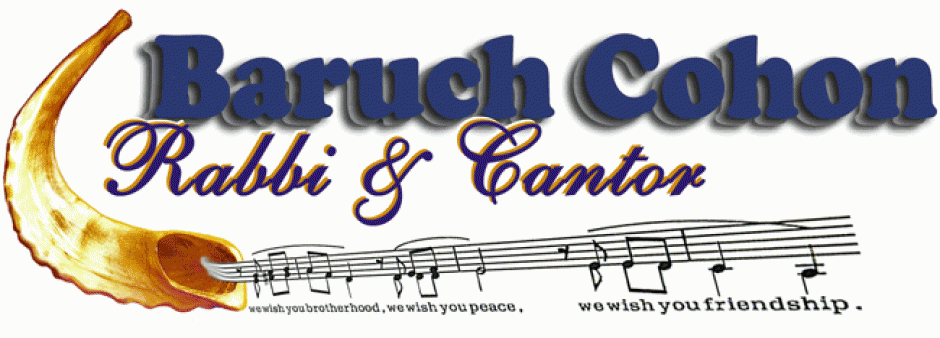Reviewed by Rabbi Baruch Cohon
Film festivals gain in importance every year, for the filmmakers and for target audiences. Once limited to nose-in-the-air programs like Cannes, they now offer varied and sometimes outstanding choices of features, shorts and documentaries in many places. Showings in some festivals can lead to professional success for the filmmakers, and can also build both general and special audiences. Here in Los Angeles we have both an Israeli Film Festival in March, and for the past seven years the Los Angeles Jewish Film Festival in May, under the creative leadership of Hilary Helstein.
Out of more than 200 submissions, this dedicated young lady selected 25 films no, they were not selected, she says, they were chosen to exhibit over a very busy week in several theaters. A talented filmmaker herself, Hilary showed her unique film As Seen through These Eyes, tracing the Holocaust through the work of concentration camp artists not as part of the series, but earlier this year — to rave reviews. For this seventh season of the LAJFF, she started us off with three totally different films. One basked in the Hollywood star system, another was a silent classic, and a third gave us a unique coming of age story set against todays Arab-Jewish conflict. If the rest of the series offers similar variety and quality and if you are in Los Angeles — dont miss it!
This seasons series opened with a true Hollywood event, timed for the 100th anniversary of both Universal and Paramount Studios, with industry celebrities present, held at the Writers Guild Theater, and featuring a film about the motion picture industry and specifically about one of its famous stars, Tony Curtis born Bernie Schwartz. People who worked with him joined critic Pete Hammond for a panel reminiscence of his life and work. His widow Jill Vandenburg and costar Mamie Van Doren spoke of his personality and helpful attitude. They and others recalled some of the pictures he starred in. Sally Kellerman met him on the set of The BostonStrangler; Marian Collier on Some Like it Hot; John Gilmore on The Sweet Smell of Success, and Marty Ingalls gave an unscheduled but entertaining commentary on his life. Then came the film.
TONY CURTIS, DRIVEN TO STARDOM was directed by Ian Ayres and included some interview footage with the actor himself in his later years. It also presented scenes from many of his pictures, and personal recollections by Harry Belafonte who costarred with him in The Defiant Ones, the only part that got them both an Oscar nomination. Coming after the live panel, this full-length documentary seemed more than full length, despite the fact that it was well paced and visually attractive.
An oldtime Hollywood gag man once told me about a party that Tony Curtis supposedly attended and brought his father who was visiting him. Greeting the host, Tony says Id like you to meet my father, Mr. Schwartz. The host looks at the old man and says Whats the matter, Curtis wasnt good enough for you?
In fact, given the subjects lack of participation in Jewish life after leaving the Bronx, one could question the Jewish value of this film for such a series. This despite the scenes of his brothers tombstone with its Hebrew inscription, and his own funeral procession with one or two yarmulkes in evidence. Of his several wives, not one was Jewish. We do not see his name or his famous face associated with any Jewish cause.
But that is not the theme of the film, nor its strongest effect. It illustrates the value of old Hollywood, recreating some of the charm and excitement of the motion picture industrys golden years, when Hollywoods struggling Jewish immigrants-turned-moguls from Louie B. Mayer to Harry Cohn celebrated America, when they had the power to work wonders for their performers and their audiences, like the wonders they had worked for themselves.
Furthermore this film gives us an insight into the character of a boy who escaped a childhood of poverty and discrimination, because his good looks got him into a studio system that produced celluloid glamour. The talent scout who took young Bernie from a high school show to a 7-year U.I. contract was all the Moses the kid needed. Give him credit. Once he had it made, he could afford to be kind to others. And he was.
The films title says it clearly: driven to stardom. As a salute to the industry, it was a fitting and effective opening choice.
Filmed in Vienna in 1924, MOON OF ISRAEL is a silent spectacle with a cast of 5,000 directed by Michael Curtiz (when his name was still Mihaly Kertesz). Cosponsored by the Austrian consulate and by Yiddishkayt LA, and introduced by Ed Lauter who is remembered as the chauffeur in last years surprise silent feature The Artist, this historic classic showed good reason why Jack Warner found it impressive enough to bring its director to Warner Brothers where he later directed big hits like Casablanca.
Adapted from a novel by Sir Rider Haggard, the subtitle read A Story of Ancient Egypt. While some of the ancient Egyptians looked remarkably Teutonic, the story highlighted the Pharaohs power and developed some high intrigue in his court. Central theme was Crown Prince Seti falling in love with a Hebrew slave girl called Moon of Israel, and a resulting clash between the prince and the other royals on whether or not to let the Hebrews go. Particularly striking were the parades, the coronation, the wedding scenes, and the desert chases. All of which led up to a violent attempt on Setis life which has him and his friend battling what looks like an entire army, with Moon of Israel braving desert cliffs to warn him and finally to save his life. When their baby dies, we see a curtain effect with silhouette figures drawing a transparent amber curtain across the screen.
When Seti enters the Hebrew temple in the land of Goshen, we see the Thirteen Divine Attributes inscribed in Hebrew over the altar. But the Hebrews accept him no more than the Egyptians will accept his lady love. Throughout the picture, every sequence hit a new visual high, with huge props, massive sets, masses of people and horses and chariots, all choreographed into motion that could be fluid or frightful. We see a war of the gods with the unseen Deity of the Hebrews destroying a giant Egyptian idol, while a drenching storm raged outside the temple. Finally we see the Exodus itself, with Curtiz Moses splitting the Red Sea as well as DeMilles Moses did and perhaps even better.
Following the Biblical narrative at that point, the Egyptians drive the Hebrews out, and then Pharaoh has his mind changed, anticipating that his former slaves could stir up the Syrians against him. When he sends a force to try to recapture the Hebrews and bring them back, we see the Pillar of Fire that stops them. No spectacular effect was spared.
Worthy of special mention was the piano accompaniment, a necessary part of any silent movie experience. Austrian pianist Gerhard Gruber celebrated his birthday by playing up a storm for this picture. An expert at this specialty, he made a major contribution to the evening. Altogether a classic !
The Los Angeles premiere of KADDISH FOR A FRIEND should draw a larger audience than it did here. Made in Germany and directed by Leo Khasin, this film explores the difficult maturing of an Arab boy from Lebanon living in fear of getting himself and his family deported from Berlin. His father and his friends, all Jew-haters, pull him violently in one direction. His mother, sensitive and pregnant, sounds a different note. The action centers on the apartment above theirs, where an 84-year-old Russian Jewish war veteran lives. After a malfunctioning shutoff valve causes a serious leak, the boy Ali and his friends break into the apartment and vandalize it. Charges and countercharges follow, with Alis mother sending him back to help the old man repair the damage so he can stay in his home. It is Ali who finds the bad shutoff valve, so he is accepted. Both of them are reluctant and resentful, but gradually they become friends. And when the old man dies, it is Ali who stands at his grave and lets the rabbi lead him through the Kaddish, since no relative is there to say it.
Along the way, both Ali and old Alexander undergo changes. Not sure how their situation will play out or how their characters will relate, we see Ali in conflict with his Arab buddies, we see him take punishment from his father, we see him save a friends life after he was knifed in a street fight, and save a girls honor when the boys are attacking her. We also see Alexander attempting to modify his charges against Ali and failing, getting angry and running the boy out of his apartment, later defying the German court and finally succeeding in exonerating the boy. Some moving scenes dramatize the ongoing challenge to overcome prejudice.
Not a perfect picture (what is?) but very worthwhile. It merited its Best Film award in the Washington DC Jewish Film Festival. See it if you can.


A terrific review of the films of the 7th Annual Los Angeles Jewish Film Festival by Rabbi Cohon. So happy you appreciate some of the 26 films “chosen”.
Don’t forget Wed 5/9 at the Music Hall Theater in Beverly Hills Iddo Netanayhu is arriving from Jerusalem to honor his hero deceased brother Yoni, at the premiere of the documentary Follow Me: The Yoni Netanhayu Story. Seats still left
Edward Lozzi
Press Office
The Los Angeles Jewish Film Festival
http://www.lajfilmfest.org
epl@lozzipr.com